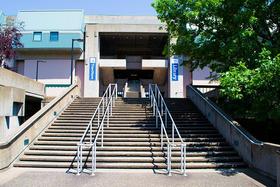One of the biggest obstacles community colleges face today is the ability to retain students until they graduate or transfer to another institution. According to the National Center for Education Statistics (NCES), just one in five public community college students graduate with their certificate or associate’s degree within three years. Students pursuing a two-year degree have a much lower chance of achieving their educational goals than those who begin their academic careers at a four-year university, as the graduation for students at four-year institutions is nearly 60 percent.

However, a college degree is imperative today for individuals who want to gain employment that offers sufficient income to support themselves and their families. Community colleges are an especially good place to get an education because of the convenience and affordability many two-year institutions offer. To help students reach their goals, colleges are getting creative in their methods of student retention.
President Obama has set a high bar for colleges across the country: to have the highest college graduation rates in the world by the year 2020. However, this is a very tall task. According to a report by 24/7 Wall St., from 2000-2011, the college graduation growth rate in the United States was a paltry 1.4 percent – one of the lowest rates of any developed country. While the U.S. has climbed the list of most educated countries – moving up to fifth place from the seventh place – there is still much work to be done.
Although the United States ranks high in terms of the amount of money dedicated to education (7.3 percent of gross domestic product, or GDP, in 2010), the money doesn’t seem to be equating to higher graduation rates. In fact, Russia, which tops the list as the most educated nation in the world, spends just 4.9 percent of GDP on education. Japan, which comes in at number three on the most educated countries list, spends slightly more on education at 5.1 percent of GDP. Clearly, throwing money at the issue is not going to produce the desired results, so colleges, with the help of state and federal government, must devise ways to supplement the influx of monetary support in order to improve college graduation rates in this country.
Getting Support
Although money isn’t the only answer, it can certainly help. President Obama has pledged government support to help colleges retain students through graduation, including financial assistance to individual students. A wealth of grants have also come in from various foundations, such as the Bill and Melinda Gates Foundation, which have helped community colleges pay for some of the innovative solutions they are developing to encourage students to stay in school and succeed.

Community colleges across the nation have developed and implemented a wide variety of student engagement strategies in an effort to boost retention and graduation rates. These strategies have been developed by community college leaders, faculty and staff members after identifying ways they can help students understand the value of an education and meet their academic goals. Among the most common of these strategies is new student orientation. Nearly all community colleges offer an orientation for students before school begins in order to familiarize them with the academic and social aspects of college. Many orientations also delve into financial aid questions, concerns about registration procedures, and fun campus activities, such as athletics. Some colleges take the orientation a step further and offer a first-year experience program. These programs, sometimes referred to as freshman seminar, offer structured lessons throughout the first semester or year of college. Study habits, healthy living, and decision-making are common topics.
Other common programs that help student retention include tutoring services and supplemental instruction for students who need extra help. Many colleges have also implemented alert and intervention programs, in which professors identify struggling students and refer them to academic advising or counseling services. Yet, some community colleges are answering the call for improved retention with more creative solutions that directly address student needs.
In 2005, this Minnesota institution implemented a “Finish What You Start” program that encourages students to finish their education and meet their academic goals. According to a report by the Huffington Post, the program includes "learning communities," where a single group of students takes a cluster of courses together that all center on a common theme or field of study. The purpose of these learning communities is to develop academic connections between students that foster accountability. When one student in the group begins to slip, the others are there to offer encouragement and assistance to help get the student back on track.
Other Minnesota schools are following suit with their own retention programs, such as a two-credit "New Student Seminar" to help lower-achieving students refine their reading skills. Other remedial courses are condensed into sessions of several weeks, rather than entire semesters, which allow students who need to brush up on skills to do so more quickly. Students in need of remediation are far less likely to graduate, so helping remedial students fast track to normal classwork improves the likelihood that they will stick with college through to graduation. These students are also required to meet with advisors twice a semester to ensure they are on track to achieve their goals.
This video claims to offer proven strategies for colleges to retain their students.
Hudson Valley Community College
This community college located outside of Albany, New York, boasts one of the highest retention rates in the country, thanks in part to innovative solutions that place their retention programs under a single banner for better tracking and quality control. According to a report on Inside Higher Ed, the combined resources make it easier for staff and faculty to identify the specific needs of individual students and provide sufficient funding for meeting those needs.
The retention services strive to be proactive, reaching students before they decide to take a break from their education. One feature of the program is an early warning system, where professors notify academic counselors of students likely to have difficulty with exams. These students are often identified through behavior in the classroom, as well as chronic tardiness and truancy. Armed with student names, counselors can then refer at-risk students to the proper services before the problems become too big for the students to overcome.
Student retention has long been a concern for community colleges across the country. However, thanks to funding from a variety of sources and innovative solutions offered up by many schools today, the retention problem seems to be improving. Yet, the work is far from over. If the U.S. is to again be the most educated country and do so by the President’s 2020 deadline, community colleges will have to continue to implement programs that seek to improve retention and graduation rates. Students who stay in school until they reach their academic goals will be more likely to achieve the success they are hoping for in life. It appears that the call put out by many civic leaders to "stay in school" was the best advice students could follow after all – the good news is that community colleges are now coming alongside students to help them do just that.
Questions? Contact us on Facebook. @communitycollegereview



































































































